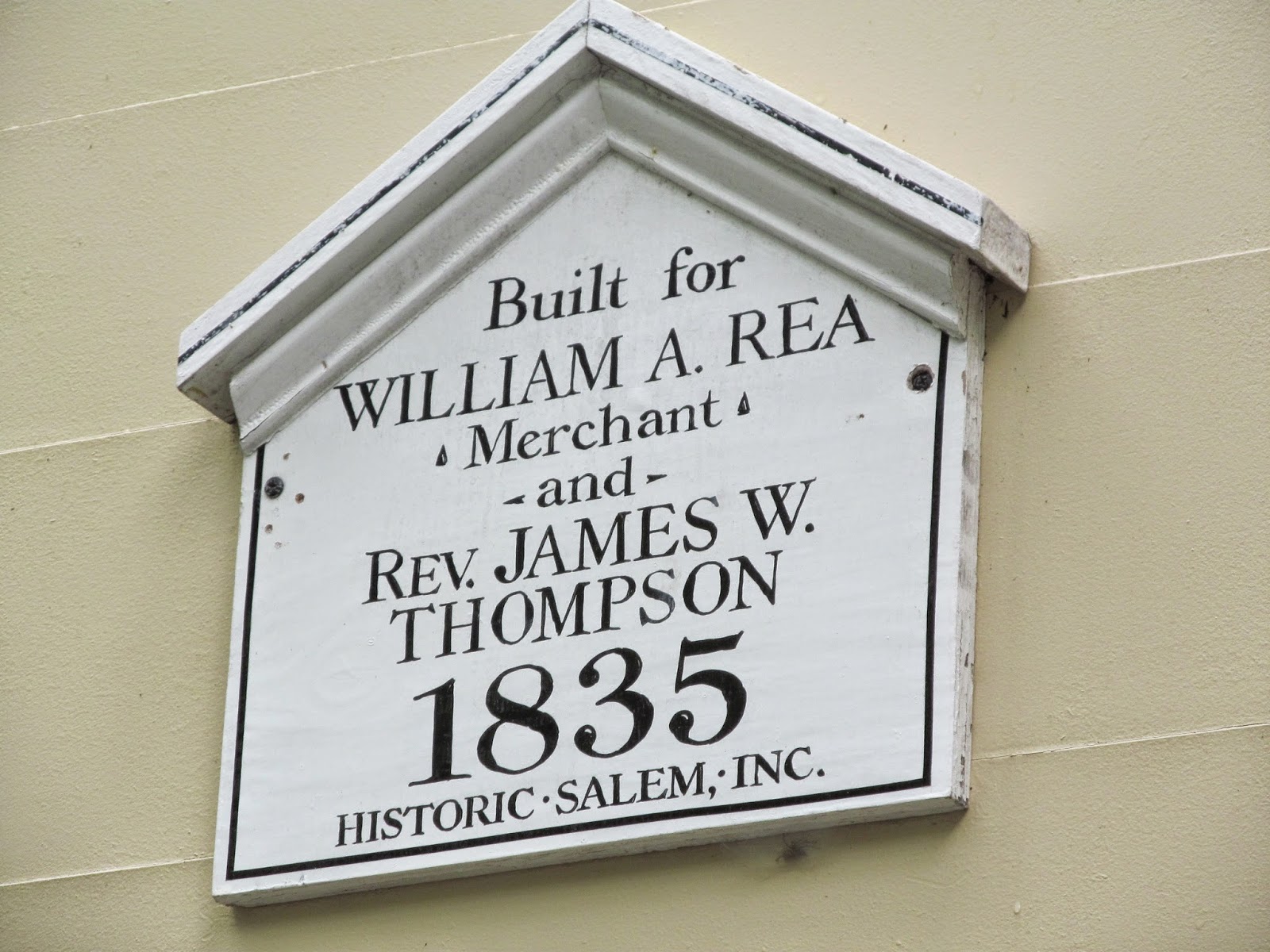Rainy days aren't the best for walking tours, but on this day, Chestnut Street: Merchants, Mansions and Memoirs Walking Tour seemed like a good fit. The dark clouds and slight raindrops made the stories more believable.
Hamilton, Pickering, Samuel McIntire; politicians, wealthy merchants, architects and artists built and lived in the mansions on a few blocks of Chestnut Street, away from the wharf area on Salem. The Federalists as they were known at the time, didn't want to mingle with the Polish immigrants that worked in their factories, and on their docks helping to make them wealthy. Today Hamilton Hall is used for dances, weddings, and meeting, much like it was in the 1800's.
The typical Federalist style of architecture was one of Samuel McIntire's style. Many of the mansions on Chestnut Street were in this design either created by McIntire or copying his style.
The style incorporates brick and wood, usually two rows of Palladian windows with a top row of smaller ones. Usually the servants lived on the top floor. These mansions had an upper and lower floor maid, kitchen staff, grounds keeper and laundress. Many of the families would have chauffeurs to drive them the few blocks from Chestnut Street to their offices at Derby or Pickering Wharf.
Another style consistent with McIntire is the tall fireplace stacks. Most of the mansions have several fireplaces throughout the home.
Greek-revival pillars are often used plus the detailing around the top of the pillars shows wealth; the more the detailing around windows and doors, the wealthier the owner.
Stephen Phillips home was replaced with siding. Because of this the Chestnut Street Association was formed to regulate what you could and could not do to the outside of your home. The New England Historical Society makes plaques for each of the home designating who the home was originally built by and when.

Phillips Home Museum sits at the end of Chestnut Street and was donated by the Phillips heirs to the city.
Many thanks to Jim McAllister our tour guide for the wonderful stories and historical antidotes.
At the end of the street, a local benefactor purchased the land and built a replication of the Derby Street House.
I just love learning more and more about my new city and will continue additional posts this summer (hoping the weather gets better of course)!
Hamilton, Pickering, Samuel McIntire; politicians, wealthy merchants, architects and artists built and lived in the mansions on a few blocks of Chestnut Street, away from the wharf area on Salem. The Federalists as they were known at the time, didn't want to mingle with the Polish immigrants that worked in their factories, and on their docks helping to make them wealthy. Today Hamilton Hall is used for dances, weddings, and meeting, much like it was in the 1800's.
 |
| Alexander Hamilton was one of the creators of the Federalist Party |
 |
| Typical Federalist Architecture style |
The style incorporates brick and wood, usually two rows of Palladian windows with a top row of smaller ones. Usually the servants lived on the top floor. These mansions had an upper and lower floor maid, kitchen staff, grounds keeper and laundress. Many of the families would have chauffeurs to drive them the few blocks from Chestnut Street to their offices at Derby or Pickering Wharf.
Another style consistent with McIntire is the tall fireplace stacks. Most of the mansions have several fireplaces throughout the home.
 |
Many of the houses were built as duplexes. Pickering built three homes attached to each other for his three daughters to help get them married off.
Today, the far-right house is owned by In a Pigs Eye (my neighborhood pub) manager/owner.
Stephen Phillips home was replaced with siding. Because of this the Chestnut Street Association was formed to regulate what you could and could not do to the outside of your home. The New England Historical Society makes plaques for each of the home designating who the home was originally built by and when.

Phillips Home Museum sits at the end of Chestnut Street and was donated by the Phillips heirs to the city.
Many thanks to Jim McAllister our tour guide for the wonderful stories and historical antidotes.
At the end of the street, a local benefactor purchased the land and built a replication of the Derby Street House.
I just love learning more and more about my new city and will continue additional posts this summer (hoping the weather gets better of course)!







No comments:
Post a Comment